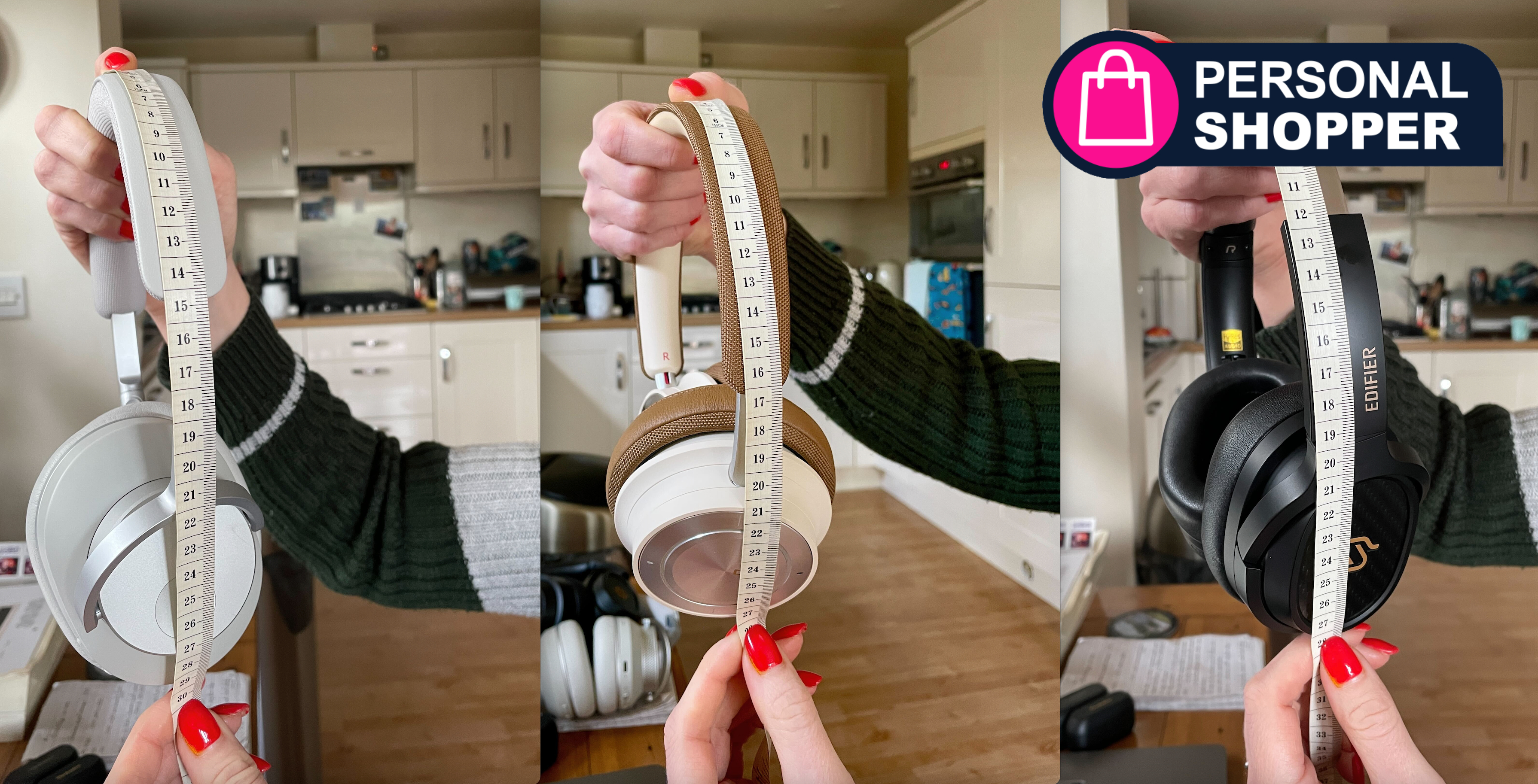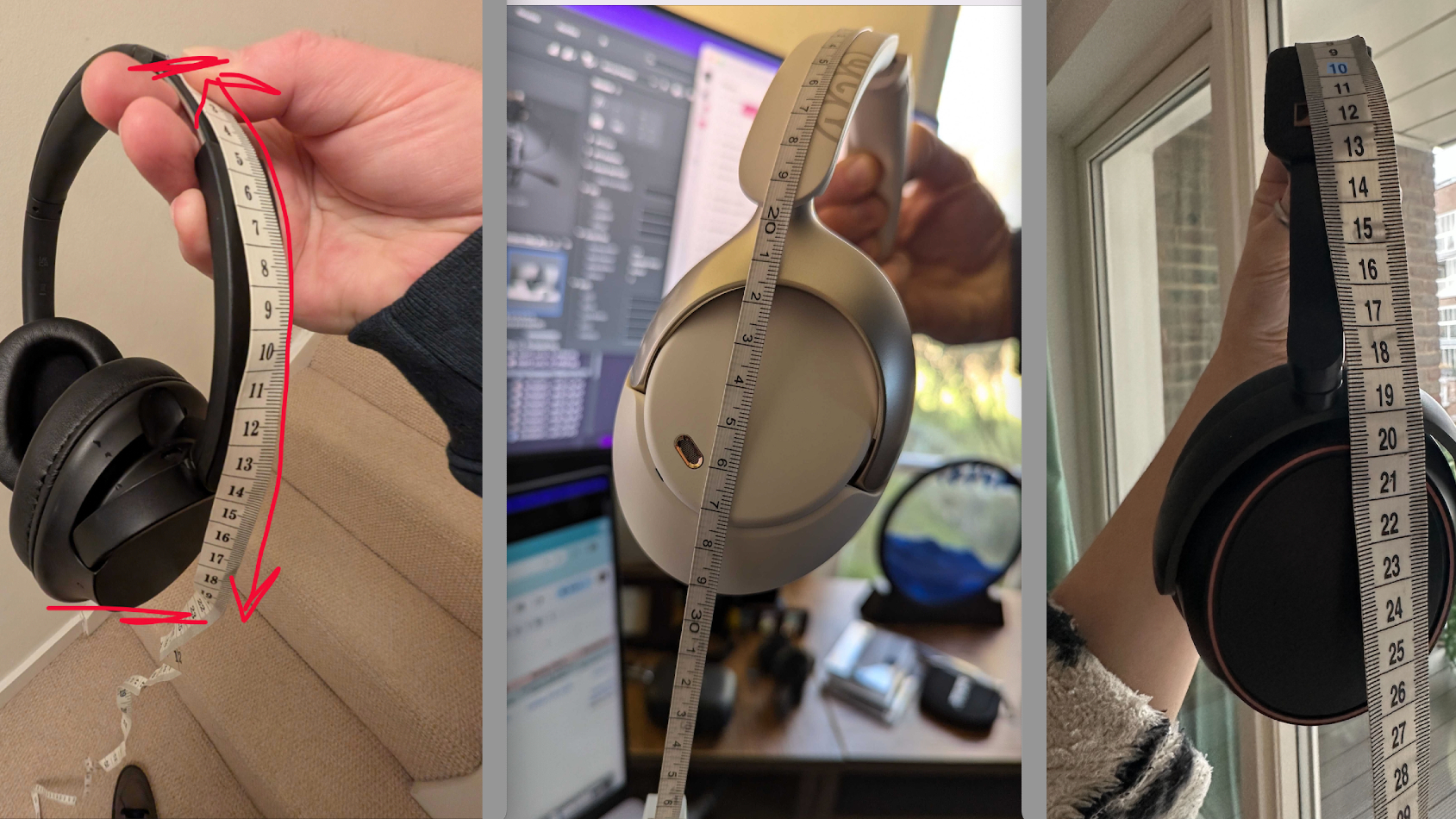Size does matter: how one reader’s email left me obsessed with headphone arm length (and sent me on a quest to find a model for larger heads)
Cans coming up short? These are your best bets – and the models to avoid

Personal Shopper is TechRadar's semi-regular advice column, where we answer questions from readers. Ever wished you could consult your own tech expert who's tried all the latest gear so they can tell you what fits your specific needs? You can! We like to consider ourselves a helpful bunch. Here's all the info about our Ask An Expert service.
I can't resist an audio-related challenge, dear reader. So when a genuine cry for help comes from the pleasant and music-loving corner of TechRadar's readership, I won't let you down. The request? For basic information concerning a headphone measurement that, I agree, seems to be missing everywhere I search for it. My reader writes:
Your site is about the most impressive of the many I have wandered through [thank you for this, by the way. Flattery is not lost here] but again there is no help for my query. I am 6.4 inches tall and not unusually proportioned, but almost every over-ear headphone I try is too 'short' and won't extend down far enough to cover my ears.
Yet specifications don't cover that measurement and most online retailers here state that I can't return them if they don't fit, since the item will not be 'unopened' if I've tried them on. I do have a set of wired Sennheisers which fit perfectly, but I want some mid-range Bluetooth headphones and it's all an exercise in frustration. Will the Sony WH-CH720N fit? Or something similar? No-one knows. Can you help? I think the extended slider leg needs to be about 20.7 cm from the middle to the bottom of the cup. Surely there must be others facing this dilemma?
Challenge accepted, sir! I'll admit, this is not an issue I've faced personally (I tend to suffer at the other end of the scale, see my best earbuds for small ears guide if you're with me) but, as the following research proves, it is a valid concern – and one that is being under-reported.
I can, for instance, check any spec-sheet for the weight and dimensions of a particular earbud, and thus get a good grasp on whether the product will fit my bijou auricles. Even a quick look at the headshell online helps! But have you ever tried finding a written measurement for the length of a headband, from top of crown to base of ear cup when fully extended, on a spec-sheet? Or searching for an image of headphones with the arms as far-extended as they can go? You won't find either. Manufacturers are not currently listing or depicting this measurement, and there's always the chance – with more budget-conscious headphones especially – this could be where some extra cents are being saved.
Tale of the tape
So here's what I'll do: create a database of measurements from review samples currently in my possession, older legacy reference sets of some of the best headphones and best noise-cancelling headphones we keep in-house as benchmark models, plus more niche headphones owned by the wider TechRadar team. This should give us a better idea of the market, and of any correlations between brands, pricing and length of the extension arm.
I'm measuring from the top of the crown with the arm fully extended, to the bottom edge of the ear cup, along the outer edge of the headphones, rather than taking the length of each extension arm. This is because headphones – even those from the same manufacturer and with similar model numbers – do not have uniform headband designs, which means the arms' hinge-points and mechanisms are located at various points along the band. So, it's confusing to measure from these points, when it's the whole measurement we want, ie., 'how big they actually go'. Got it? Good.
Sign up for breaking news, reviews, opinion, top tech deals, and more.
My hope is that by measuring from the top of your own crown, where you'd like your headphones to grace it, down to just below your own earlobe, you'll know whether this particular issue will affect you, and which models might be more accommodating. I've never had to extend the arm on a set of headphones once from the out-of-the-box setting, but then my measurement there is only 21cm (my partner's is 23.5cm) so if you're like us, you're likely not my target audience. Right! Off we go.
| Model | Price | Measurement (from crown to lower ear cup edge) | Notes |
|---|---|---|---|
| 1More Sonoflow Pro HQ51 | $90 (about £70 / AU$135) | 29cm | Row 0 - Cell 3 |
| Bose QuietComfort Headphones | $349 / £349 / AU$549.99 | 28cm | Very flexible headband |
| Cambridge Audio Melomania P100 | $279 / £229 / AU$479 | 30cm | Larger-than-average, oval earcups too |
| Dali IO-8 | $899 / £599 / AU$TBC | 28.5cm | Smooth, silent movement |
| QCY H3 Pro | Around $50 / £45 / AU$89 | 29.5cm | Row 4 - Cell 3 |
| Sennheiser 350BT | Around $119 / £89 / AU$175 | 26.5cm | A little older (Jan 2020 release) so look for deals |
| Sennheiser Momentum 4 Wireless | $299 / £269 / AU$450 | 27cm | Row 6 - Cell 3 |
| Sonos Ace | $449 / £449 / AU$699 | 26.5cm | Row 7 - Cell 3 |
| Sony WH-CH720 | $149 / £99 / AU$259 | 29cm | Row 8 - Cell 3 |
| Sony WH-1000XM3 | Officially discontinued | 29cm | Adding for reference – and if you can find a deal, they're iconic |
| Sony WH-1000XM5 | $329 / £319 / AU$549 | 29.5cm | Row 10 - Cell 3 |

Use your head
So, what did we learn? Well, right off the bat, Sennheiser (both the 350BT and the Momentum 4 Wireless) and the Sonos Ace are coming up a little, er, short against the competition. And they are certainly not the cheapest options in this list, so my theory that cheaper headphones will probably have had a little shaved off the headband (because profit margins) simply isn't ringing true.
Meanwhile, Sony is nothing if not predictable, with a standard 29cm reading (stretching to 29.5cm on the WH-100XM5) whatever the model we looked at, based purely on our measurements, with the Bose option coming in at a centimeter shorter.
I'd suggest that my reader would be happy with the Sony WH-CH720 based on that 29cm reading, although Cambridge Audio's excellent Melomania P100 (or even the much cheaper QCY H3 Pro – which is not a model I've tested) could be even better, on measurements alone. I reached out to Sony for more on this, so if I get any concrete information on target measurements designers need to hit, I'll update what you're reading now.
But we're not done! The beauty of an online feature is that you, dear reader, can help build our database and help out our taller and/or larger-brained friends. Maybe you're wearing headphones right now, as you consult these figures. Why not measure your cans and post the data in the comment thread? Us music-lovers gotta stick together you know…
You may also like
- The AirPods Pro’s long-promised heart-rate monitoring could be one step closer – but don’t wait up
- Campfire Audio's Alessandro Cortini collab IEMs are everything my Nine Inch Nails-loving heart needs
- Record Store Day 2025 has been announced, as if you needed an excuse to buy more records
- I'd like to be, under the sea, with Ringo Starr's Studer 80 recorder, in the shade

Becky became Audio Editor at TechRadar in 2024, but joined the team in 2022 as Senior Staff Writer, focusing on all things hi-fi. Before this, she spent three years at What Hi-Fi? testing and reviewing everything from wallet-friendly wireless earbuds to huge high-end sound systems. Prior to gaining her MA in Journalism in 2018, Becky freelanced as an arts critic alongside a 22-year career as a professional dancer and aerialist – any love of dance starts with a love of music. Becky has previously contributed to Stuff, FourFourTwo and The Stage. When not writing, she can still be found throwing shapes in a dance studio, these days with varying degrees of success.
You must confirm your public display name before commenting
Please logout and then login again, you will then be prompted to enter your display name.